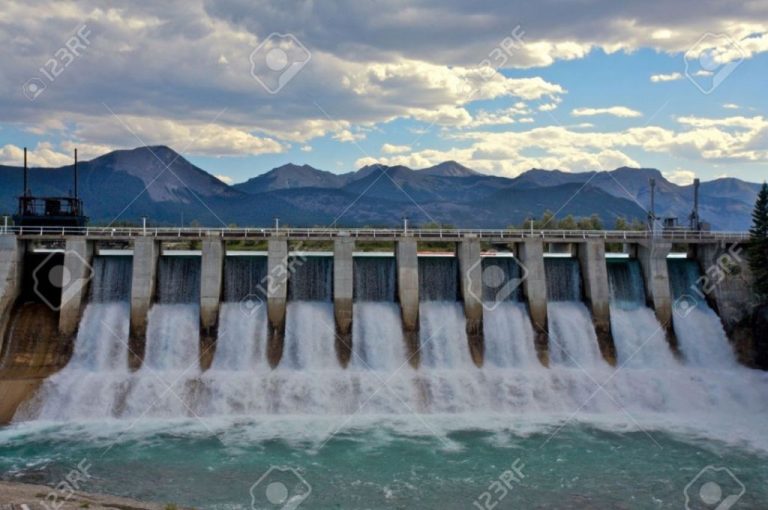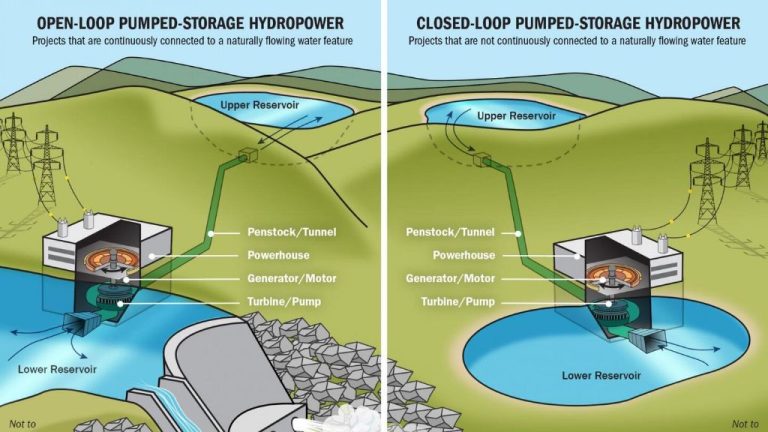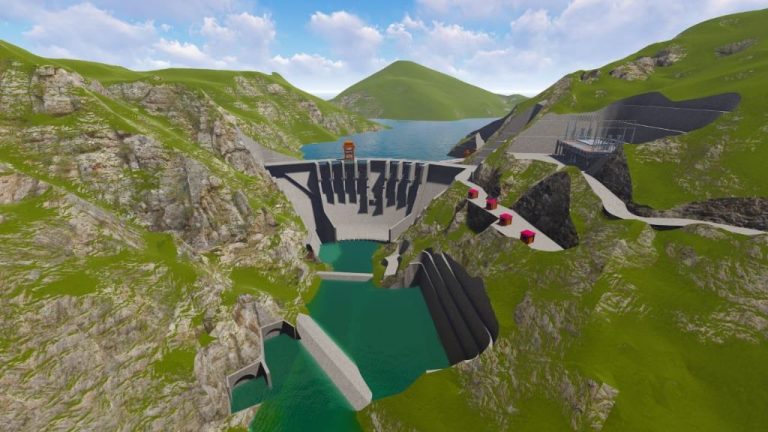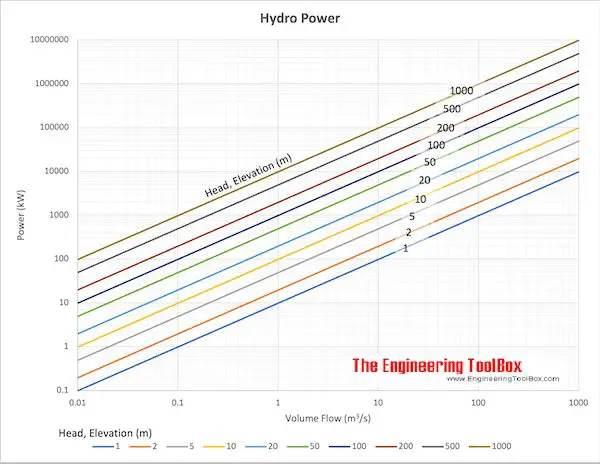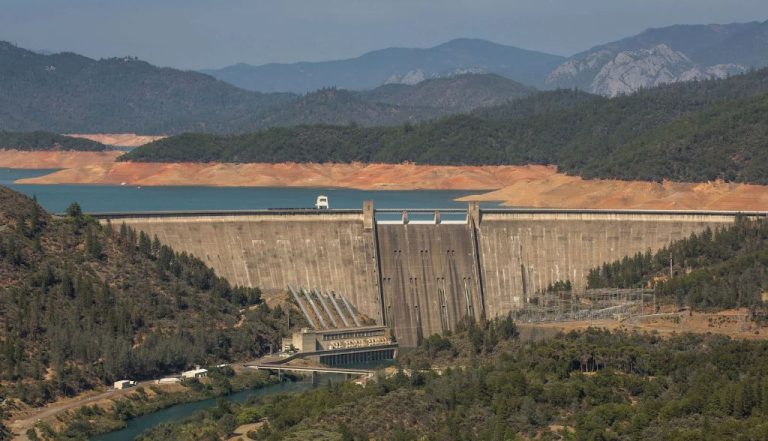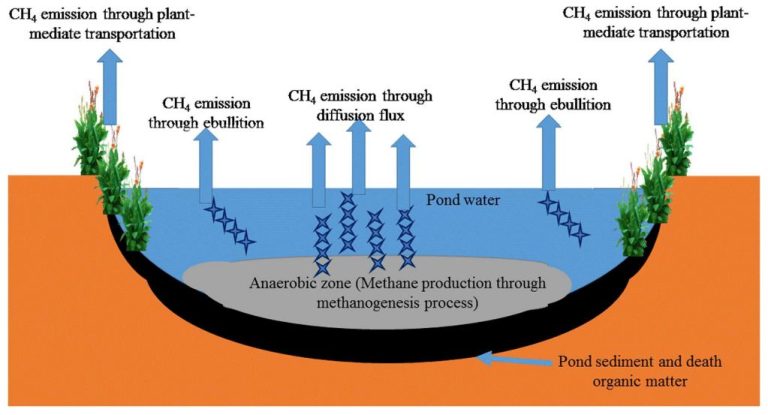How Do We Generate Hydropower?
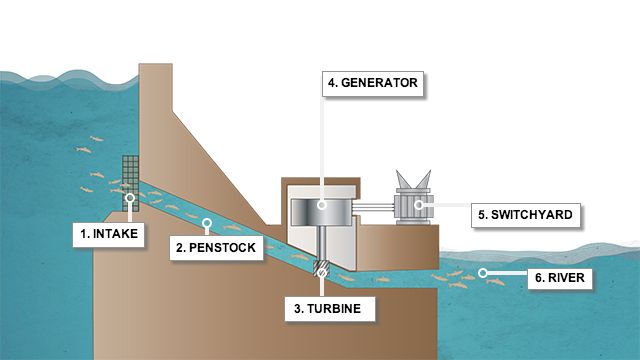
Hydropower is a form of renewable energy that utilizes the natural water cycle to generate electricity. The term hydropower refers to the process of using falling or fast-flowing water to produce power. This is achieved by converting the kinetic energy of moving water into mechanical energy, which then rotates a turbine to generate electricity.
Humans have harnessed the power of water for thousands of years, starting with water wheels and evolving into modern hydroelectric dams. The first hydroelectric power plant was built at Niagara Falls in 1879. Since then, hydropower has grown into the largest source of renewable electricity globally, accounting for around 16% of the world’s total electricity generation.
Hydropower is considered a clean and renewable source of energy because it relies on the water cycle which is constantly renewed by precipitation. The process itself does not burn fossil fuels or emit greenhouse gases. Hydropower also provides a flexible and reliable source of electricity that can quickly respond to changes in demand. For these reasons, expanding hydropower capacity is seen as a key strategy for many countries looking to transition away from fossil fuels and combat climate change.
Hydropower Basics
Hydropower plants utilize the kinetic energy of moving water to generate electricity. As water flows, it transmits kinetic energy. A portion of this energy can be captured and turned into electricity by hydropower plants. The key components involved in hydroelectric power generation are:
Water Source – The most common types of hydroelectric plants utilize dams on rivers to create reservoirs of water. The water in rivers flows downstream due to gravity, creating kinetic energy that can be converted into mechanical energy by turbines.
Turbines – Hydropower turbines are machines that convert the kinetic energy of falling water into mechanical energy. There are two main types of turbines – impulse and reaction. Impulse turbines utilize the velocity of water to move the turbine blades. Reaction turbines are fully immersed in water, which applies pressure to the turbine blades to propel the turbine. In both cases, the moving turbine turns a shaft.
Generators – The shaft of the turbine is connected to a generator to convert the mechanical energy into electrical energy. Generators contain magnets that rotate around coils of copper wire, producing an electric current through electromagnetic induction.
By utilizing the natural downward flow of rivers and converting kinetic energy into electricity, hydropower plants are able to harness renewable energy to generate power (ENERGY.GOV). The components work together to convert the energy of moving water into usable electricity.
Dams and Reservoirs
Dams are a critical component of most hydropower facilities. They help to control and store water by blocking rivers and creating reservoirs. Reservoirs are bodies of water held back by a dam, which store potential energy via the water held at higher elevations. This stored water can then be released through the dam to spin turbines and generate electricity.
The purpose of dams in hydropower is to:
- Store large volumes of water for electricity generation
- Regulate water flow and supply
- Control flooding and irrigation
Creating large reservoirs does impact the environment. Building dams and reservoirs often requires flooding large areas of land, which can displace wildlife and human populations. Dams also change natural water flows, which impacts fish migration and downstream ecosystems that rely on regular water flows. However, dams also provide recreational opportunities like lakes, and flood control benefits.
Some of the world’s biggest reservoirs created for hydroelectricity include Lake Kariba on the Zambezi River behind the Kariba Dam, and the massive Three Gorges Reservoir behind China’s Three Gorges Dam, which spans over 400 miles in length.
Overall, carefully designed and managed dams and reservoirs are essential for storing the water needed to generate electricity from hydropower.
Turbines
There are two main types of hydro turbines used in hydropower plants: impulse and reaction turbines. Impulse turbines, like Pelton wheels, use the velocity of water to move the turbine runner and discharges water at atmospheric pressure. Reaction turbines, like Francis and Kaplan turbines, generate power from the combined action of pressure and moving water. The type of turbine used depends on the height and flow of the water (Energy.gov).
The most common turbine types used in hydropower plants are:
- Francis Turbine: Used for low to medium water heads. The incoming water hits the turbine blades, transferring rotational momentum to the rotor. Francis turbines are the most common for hydroelectric power today.
- Kaplan Turbine: Used for low water heads. Kaplan turbines have adjustable blades for efficient operation in a wide range of flow conditions.
- Pelton Wheel: Used for high water heads. Pelton wheels convert the hydraulic head and flow into rotational energy via impulse from one or more free jets striking the bucket-shaped blades of the runner.
The spinning turbine converts the energy of the moving water into mechanical power. The turbine shaft is connected to the generator shaft, which rotates the magnets inside the generator to produce electricity (Enelgreenpower.com). The principles of converting water pressure and flow into electricity have enabled hydro turbines to achieve up to 90% efficiency.
Generators
Generators play a critical role in hydropower plants by converting the mechanical energy from the spinning turbine into electrical energy. They operate based on the principle of electromagnetism, whereby the movement of a magnetic field across a conductor produces an electric current.
The turbine and generator are connected to the same shaft. As the water hits the turbine blades, the shaft spins. The generator has a rotor attached to the shaft which rotates through a stationary magnetic field. This induces a voltage, and current begins to flow in the windings of the generator, producing electricity. The electricity is then fed into transformers to increase the voltage and transmit the power onto the electric grid.
The amount of electricity that can be generated depends on the water pressure and flowrate. More pressure and flow allows the turbines and generators to spin faster, which induces greater electromagnetic forces in the generator. By optimizing turbine and generator design, modern hydro plants are able to convert up to 90% of the available mechanical energy into electricity.
Thus generators are a key component that allows hydropower to be a reliable and efficient source of renewable electricity generation.
Transmission
Once electricity is generated at hydropower stations, it must be transmitted to consumers. This is done through transmission lines that carry electricity over long distances. The transmission system for hydropower is interconnected with transmission lines from other power plants to form a grid that connects electricity generators with distributors and end users.
Most hydropower plants are located far from major cities where electricity demand is highest. The dams are often built in remote areas near flowing water sources. Therefore, a network of high-voltage transmission lines is required to deliver the electricity generated at hydropower dams to load centers. These include overhead power lines, underground cables and substations for stepping up voltage for efficient long-distance transmission.
The transmission system must be capable of handling large amounts of electricity generated at peak capacity of hydropower plants and also adjustable to deliver varying output during different seasons and precipitation conditions. Sophisticated control and coordination is required to balance electricity supply and demand across the grid.
Pumped Storage
Pumped storage is a technique that uses hydropower to store energy by pumping water uphill to a reservoir at higher elevation. Here’s how it works:
During times when electricity demand is low, such as at night, excess generation capacity is used to pump water from a lower reservoir up to an elevated reservoir. This converts the electrical energy into potential gravitational energy stored in the elevated water.
Then, during periods of high electricity demand, the stored water can be released from the upper reservoir through turbines to generate electricity. This allows the stored energy to be converted back into electricity when it is most needed.
Pumped storage provides a way to effectively store large amounts of energy and improve grid reliability. It accounts for over 90% of utility-scale energy storage worldwide. The size of pumped storage reservoirs and the height differential between them determines the potential energy storage capacity.
Pumped storage is one of the most cost-effective large-scale energy storage options available today. It can quickly respond to fluctuations in electricity demand and supply renewable energy when the sun isn’t shining or wind isn’t blowing. As renewable energy grows, pumped storage helps integrate these intermittent sources into the grid.
Micro Hydropower
Micro hydropower projects generate < 10MW of electricity and are often developed to provide power locally (source: Renewable Energy Cost Analysis: Hydropower). These smaller projects can provide clean energy access for homes, farms, or small communities.
The costs for micro hydropower can vary greatly depending on the site conditions and project size. According to How much does a 1kw hydro turbine cost?, a small system can cost anywhere from a few thousand to tens of thousands of dollars. Key components like the turbine, generator, piping and electronics will impact overall costs.
Micro hydropower is well-suited for remote, rural locations that lack access to an electricity grid. The systems operate by diverting water from a stream or river through a pipe and turbine to generate electricity. This local power source can provide affordable and reliable energy without the need for long transmission lines.
Environmental Impacts
While hydropower is a renewable energy source, dams and reservoirs can have negative environmental impacts (U.S. Energy Information Administration, 2022). Major consequences include habitat loss, greenhouse gas emissions, and flow changes. When a dam is built, the resulting reservoir can flood forests, agricultural land, and ecologically important natural areas (Union of Concerned Scientists, 2013). This destroys plant and animal habitats in the area. For example, flooding land for the Three Gorges Dam in China destroyed agricultural areas and forced over 1 million people to relocate (International Rivers, n.d.).
Reservoirs and dams also change the natural flow of rivers. Altering water levels and flow patterns can negatively impact native species that rely on natural river systems (U.S. Geological Survey, 2018). Fish migration can be hindered, blocking access to spawning areas. Other animals like river dolphins can struggle to hunt and find food. Reduced river flows below dams mean less sediment transport downstream, which erodes beaches and harms estuarine ecosystems (International Rivers, n.d.).
Greenhouse gas emissions are another concern. As plants decompose in new reservoirs, substantial amounts of methane are released over time (U.S. Energy Information Administration, 2022). Methane has over 20 times the global warming potential of carbon dioxide (EPA, 2022). Hydropower facilities try to reduce these impacts through careful planning, fish ladders, and regulating water flows. However, dams fundamentally alter river ecosystems.
Future of Hydropower
The future looks bright for hydropower, with significant growth potential on the horizon. According to the International Energy Agency (IEA), global hydropower capacity is set to increase by 17%, or 230 GW, between 2021 and 2030. While most of this growth will come from Asia, all regions are expected to expand their hydropower capacity over the next decade.
Several new technologies are emerging that will improve sustainability and increase generating capacity at existing hydropower facilities. Upgrades to existing infrastructure, including digitalization, more efficient turbines, and adding pumped storage capabilities to existing dams, can boost output. Floating solar panels installed on reservoir surfaces also hold promise for boosting renewable energy production.
The hydropower industry is also making strides when it comes to environmental sustainability. Solutions like fish ladders, minimum flow rates, and turbine design modifications can reduce impacts on wildlife. Dam removals and free-flowing river protections are also being pursued where appropriate. Overall, the future of hydropower looks bright, with greener technologies and sustainable practices expected to enable continued clean energy growth for decades to come.

